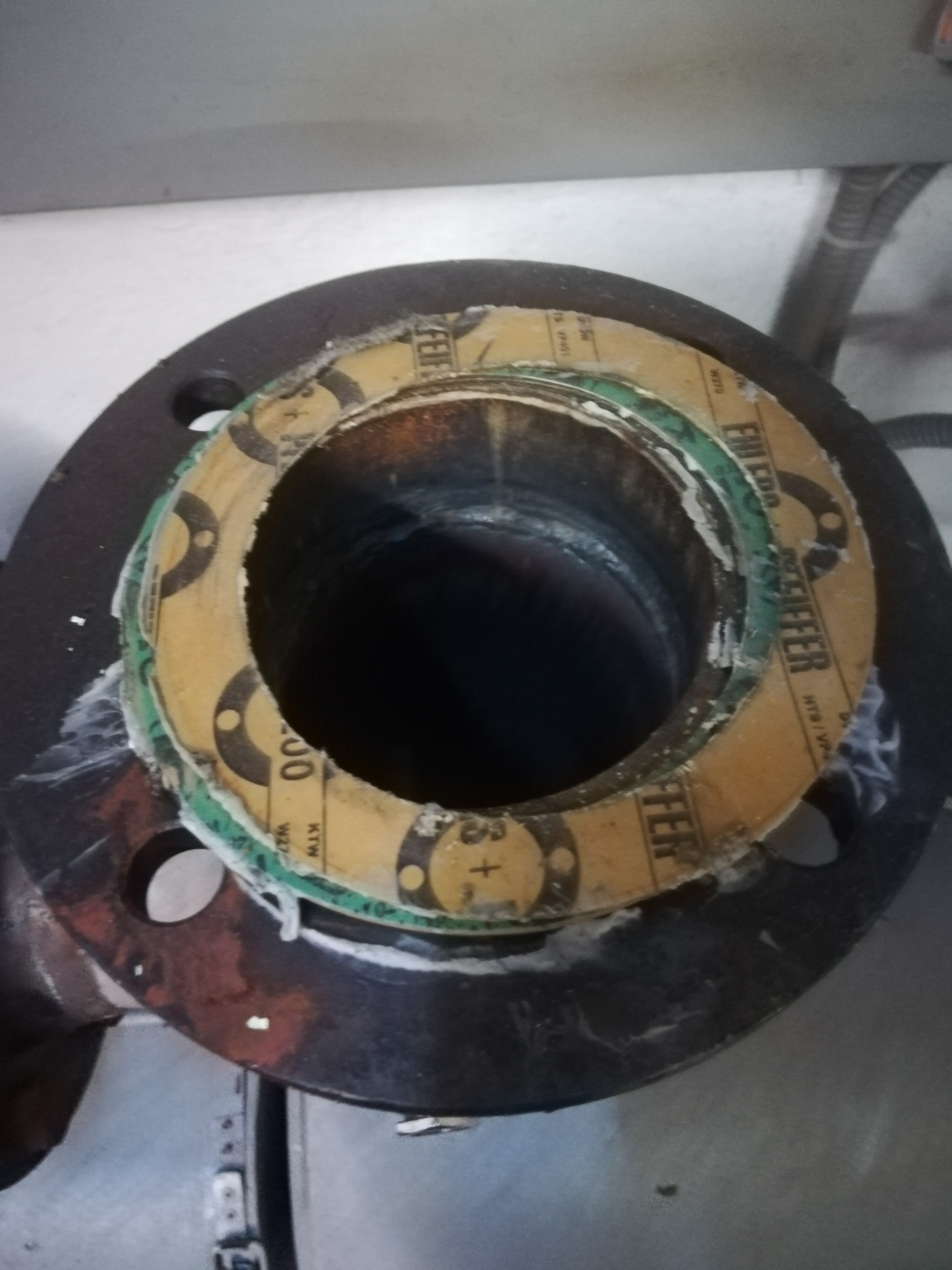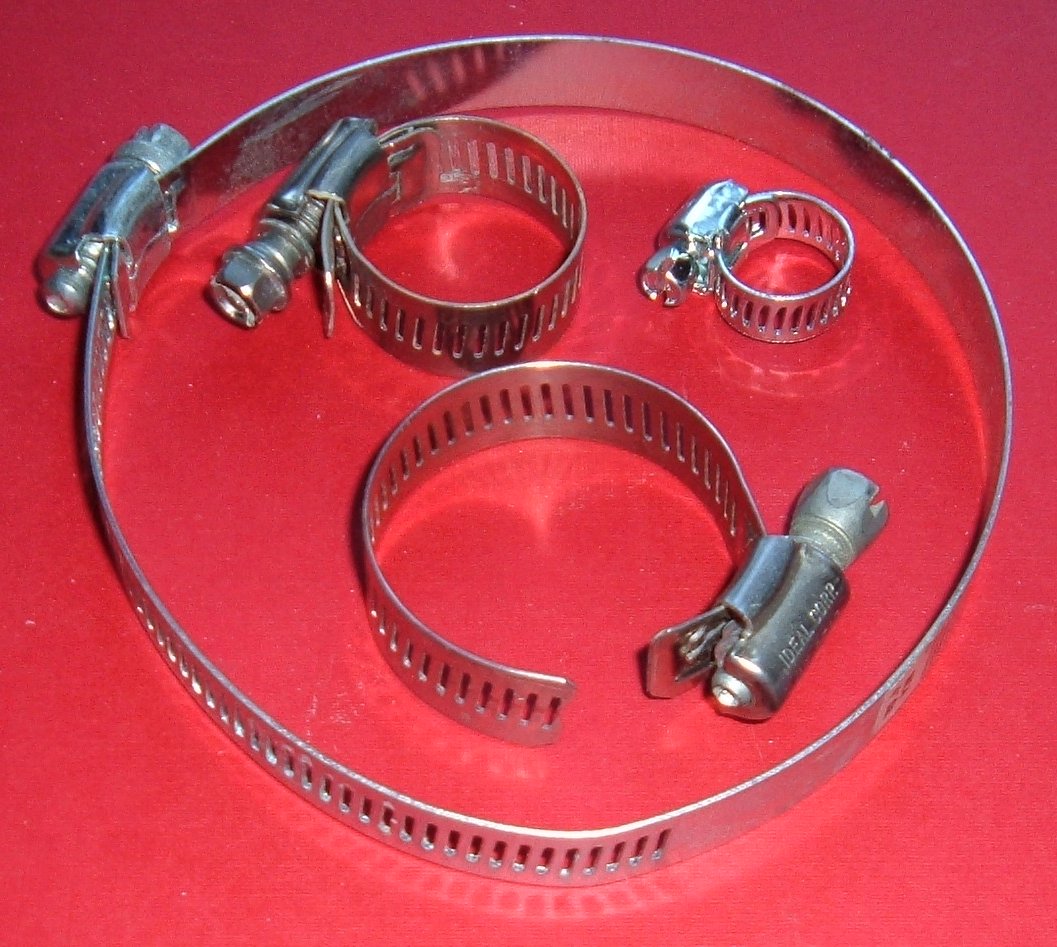|
ISO 2852
ISO 2852 ''Stainless steel clamp pipe couplings for the food industry'' was an international standard that defines a non-permanent sanitary food-grade piping interconnect method, commonly used in the food processing industry and with dairy farm equipment. The interconnect consists of: * a lip flange on the ends of pipes with a grooved indentation on the flange. * a polymer sealing gasket placed between sections of pipe, squeezed between the flanges. This ring has a raised groove on both sides mating with the indentations of the two pipes on either side. * an enclosing clamp with C-shape clamping sections that cover the outer circumference of the flanges, applying pressure to squeeze the two pipe sections together onto the sealing ring. The clamp also provides structural strength and rigidity to the pipe sections. The combined lip flange and gasket do not impede the flow of fluids through the piping. The clamping system may be permanent, using a hose clamp A hose clamp (hose ... [...More Info...] [...Related Items...] OR: [Wikipedia] [Google] [Baidu] |
International Standard
international standard is a technical standard developed by one or more international standards organizations. International standards are available for consideration and use worldwide. The most prominent such organization is the International Organization for Standardization (ISO). Other prominent international standards organizations including the International Telecommunication Union (ITU) and the International Electrotechnical Commission (IEC). Together, these three organizations have formed the World Standards Cooperation alliance. Purpose International standards may be used either by direct application or by a process of modifying an international standard to suit local conditions. Adopting international standards results in creating national standards that are equivalent, or substantially the same as international standards in technical content, but may have (i) editorial differences as to appearance, use of symbols and measurement units, substitution of a point for a com ... [...More Info...] [...Related Items...] OR: [Wikipedia] [Google] [Baidu] |
Food Processing
Food processing is the transformation of agricultural products into food, or of one form of food into other forms. Food processing includes many forms of processing foods, from grinding grain to make raw flour to home cooking to complex industrial methods used to make convenience foods. Some food processing methods play important roles in reducing food waste and improving food preservation, thus reducing the total environmental impact of agriculture and improving food security. Primary food processing is necessary to make most foods edible, and secondary food processing turns the ingredients into familiar foods, such as bread. Tertiary food processing has been criticized for promoting overnutrition and obesity, containing too much sugar and salt, too little fiber, and otherwise being unhealthful in respect to dietary needs of humans and farm animals. Process Primary food processing Primary food processing turns agricultural products, such as raw wheat kernels or livest ... [...More Info...] [...Related Items...] OR: [Wikipedia] [Google] [Baidu] |
Dairy Farm
Dairy farming is a class of agriculture for long-term production of milk, which is processed (either on the farm or at a dairy plant, either of which may be called a dairy) for eventual sale of a dairy product. Dairy farming has a history that goes back to the early Neolithic era, around the seventh millennium BC, in many regions of Europe and Africa. Before the 20th century, milking was done by hand on small farms. Beginning in the early 20th century, milking was done in large scale dairy farms with innovations including rotary parlors, the milking pipeline, and automatic milking systems that were commercially developed in the early 1990s. Milk preservation methods have improved starting with the arrival of refrigeration technology in the late 19th century, which included direct expansion refrigeration and the plate heat exchanger. These cooling methods allowed dairy farms to preserve milk by reducing spoiling due to bacterial growth and humidity. Worldwide, leading dairy i ... [...More Info...] [...Related Items...] OR: [Wikipedia] [Google] [Baidu] |
Gasket
Some seals and gaskets A gasket is a mechanical seal which fills the space between two or more mating surfaces, generally to prevent leakage from or into the joined objects while under compression. It is a deformable material that is used to create a static seal and maintain that seal under various operating conditions in a mechanical assembly. Gaskets allow for "less-than-perfect" mating surfaces on machine parts where they can fill irregularities. Gaskets are commonly produced by cutting from sheet materials. Given the potential cost and safety implications of faulty or leaking gaskets, it is critical that the correct gasket material is selected to fit the needs of the application. Gaskets for specific applications, such as high pressure steam systems, may contain asbestos. However, due to health hazards associated with asbestos exposure, non-asbestos gasket materials are used when practical. It is usually desirable that the gasket be made from a material that is to some de ... [...More Info...] [...Related Items...] OR: [Wikipedia] [Google] [Baidu] |
Hose Clamp
A hose clamp (hose clip, hose lock or Jubilee clip (UK)) is a device used to attach and seal a hose onto a fitting such as a barb or nipple. Types Many types are available, including : Screw/band (worm gear) clamps Screw clamps consist of a band, often galvanized or stainless steel, into which a screw thread pattern has been cut or pressed. One end of the band contains a captive screw. The clamp is put around the hose or tube to be connected, with the loose end being fed into a narrow space between the band and the captive screw. When the screw is turned, it acts as a worm drive pulling the threads of the band, causing the band to tighten around the hose (or when screwed the opposite direction, to loosen). Screw clamps are normally used for hoses 1/2 inch diameter and up, with other clamps used for smaller hoses. The first patent for a worm-drive hose clamp was granted to Swedish inventor in 1896 Bergström founded “Allmänna Brandredskapsaffären E. Bergström & Co ... [...More Info...] [...Related Items...] OR: [Wikipedia] [Google] [Baidu] |
Cleanability
Cleanability is a term used in clean productions (e.g. to assess the cleanability of technical surfaces). Description In order to ensure optimum cleanability of the surfaces of machines and equipment, they must fulfil certain requirements. Where surfaces come into contact with media, no deposits may be formed which could impair product quality. Therefore, the surface roughness of such areas should be below 0.8 µm (see EHEDG doc. 8). If the degree of roughness is exceeded, resistances may develop during disinfection processes. These occur when microorganisms only come into contact with disinfectants but are not killed by them. When ascertaining the cleanability of a surface with regard to particles, the analysis can be carried out in correlation with the surface cleanliness classes described in VDI 2083 Part 9.1. Surface roughness can be measured, for example, using profile methods (DIN EN ISO 11562) or AFM (atomic force microscope Atomic force microscopy (AFM) or scanning f ... [...More Info...] [...Related Items...] OR: [Wikipedia] [Google] [Baidu] |
ASME BPE
ASME BPE ( American Society of Mechanical Engineers: Bioprocessing Equipment) is an international Standard developed as an aid for the design and construction of equipment intended for use in the manufacturing of biopharmaceuticals. The standard is approved as an American National Standard by thASME Board of Pressure Technologies The first edition of this Standard was approved as an American National Standard on May 20, 1997. The most recent edition was approved by ANSI on March 21, 2022. New editions of the standard are generally approved and published every two years. Purpose and Scope The ASME Bioprocessing Equipment (BPE) Standard was developed to aid in the design and construction of new fluid processing equipment used in the manufacture of biopharmaceuticals, where a defined level of purity and bioburden control is required. The Standard typically applies to (a) components that are in contact with the product, raw materials, or product intermediates during manufacturing, ... [...More Info...] [...Related Items...] OR: [Wikipedia] [Google] [Baidu] |




